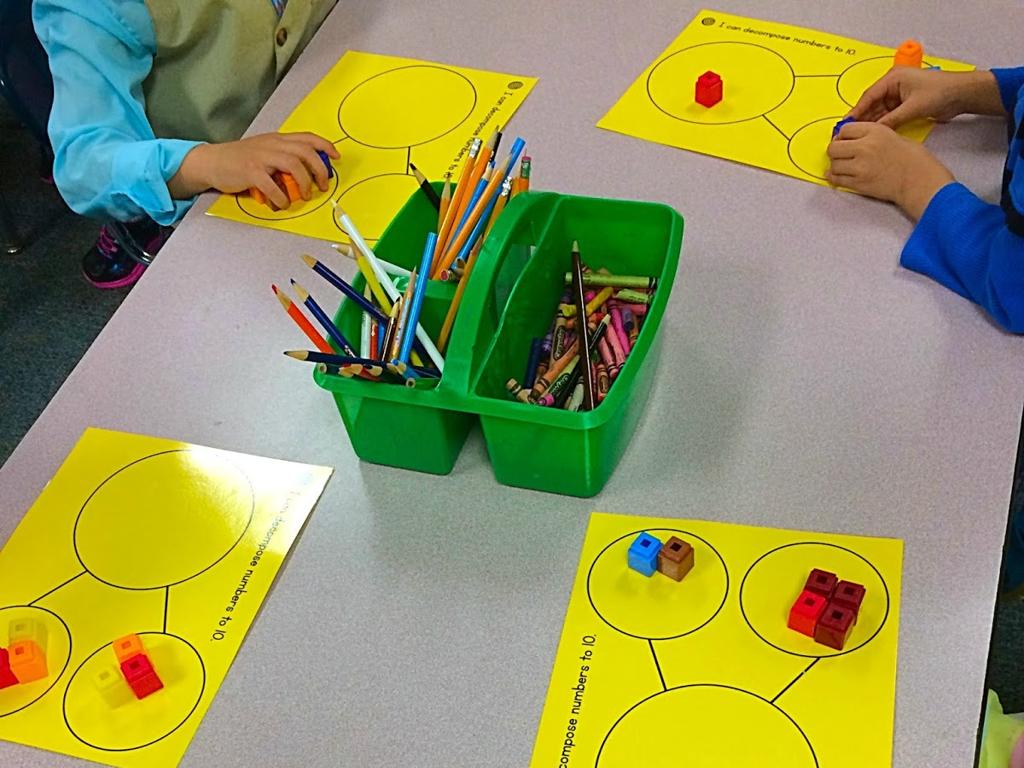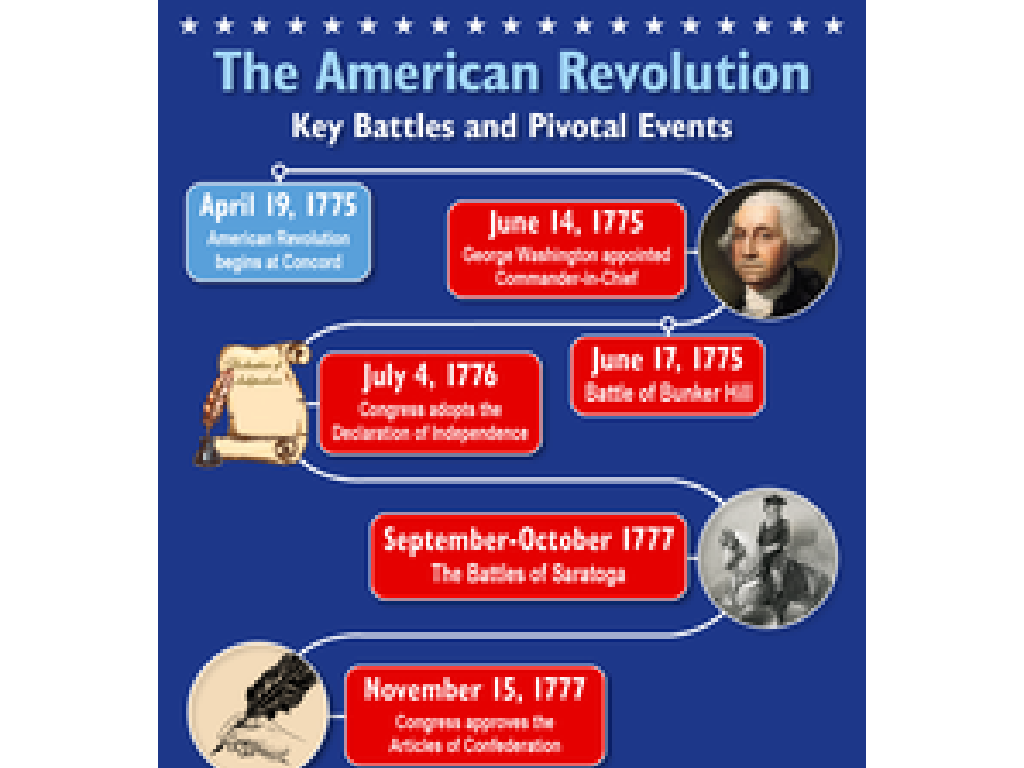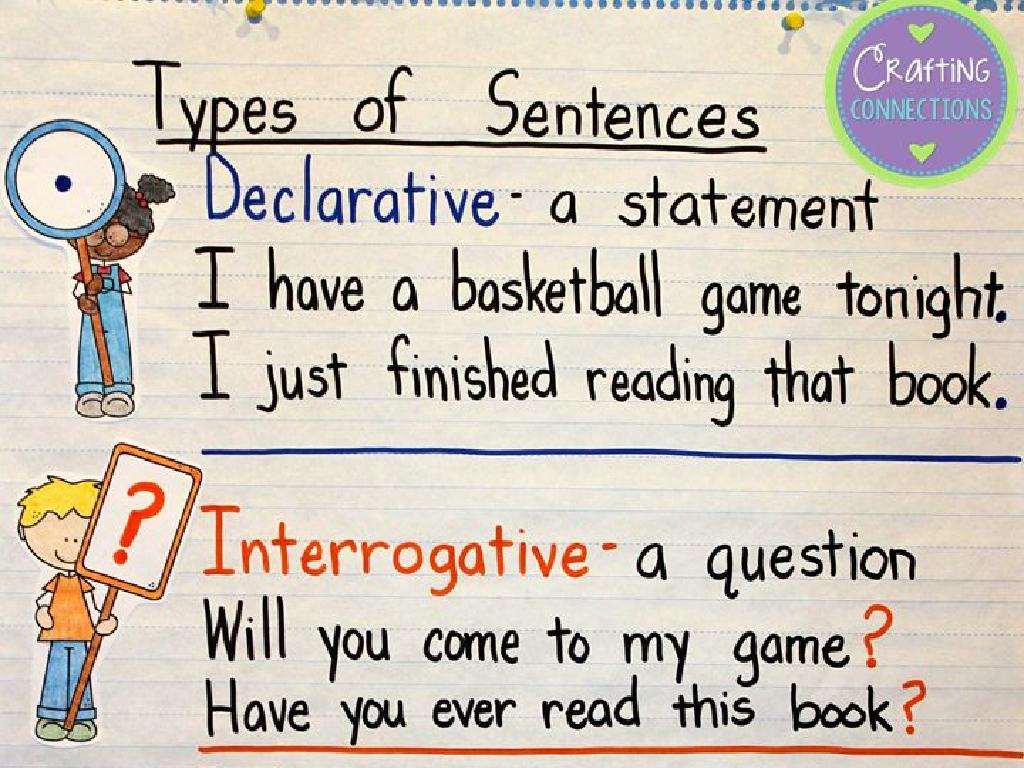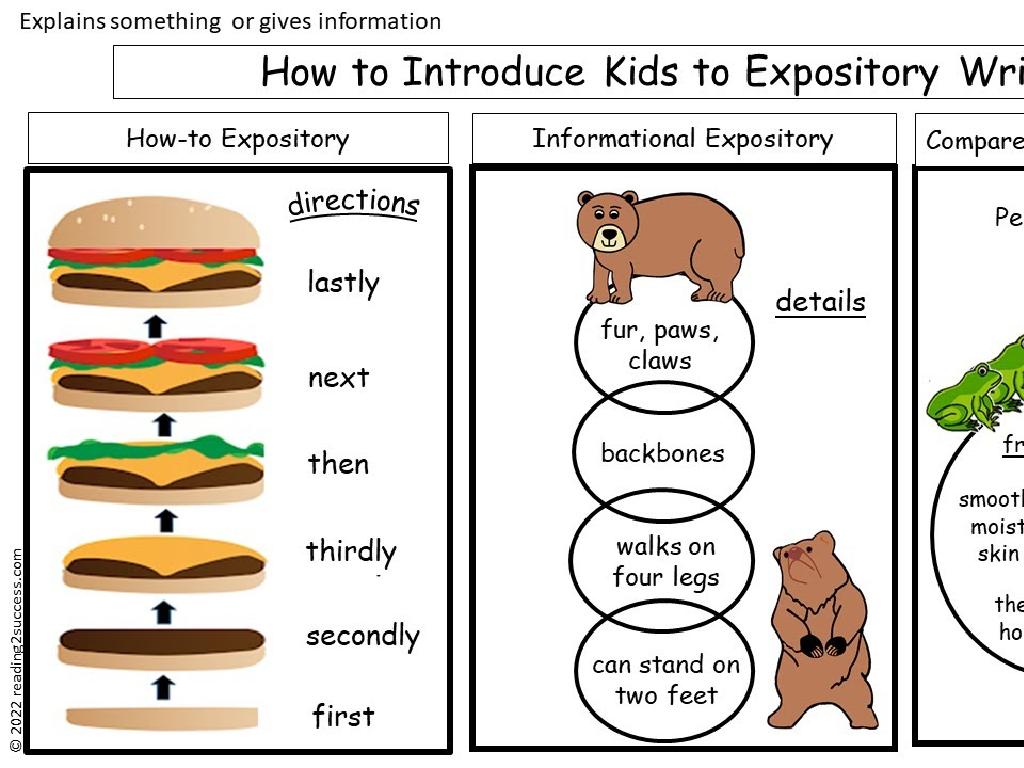Find Words Using Context
Subject: Language arts
Grade: Eighth grade
Topic: Context Clues
Please LOG IN to download the presentation. Access is available to registered users only.
View More Content
Welcome to Context Clues!
– Grasping context clue power
– Context clues help readers deduce word meanings without a dictionary.
– Defining context clues
– Clues in text that hint at a word’s meaning.
– Significance in reading
– They improve comprehension and fluency.
– Enhancing vocabulary skills
– Using context clues can expand your word knowledge.
|
This slide introduces the concept of context clues, a critical reading strategy for students. Context clues are hints found within a sentence or passage that can help readers figure out the meaning of unfamiliar words, thus enhancing their comprehension and vocabulary skills. Emphasize the importance of being able to infer meaning from the text without always relying on a dictionary, which can make reading more fluent and enjoyable. Encourage students to look for examples of context clues in their daily reading and to practice using this strategy to become more independent readers.
Types of Context Clues
– Definition/Explanation Clues
– Clues given through definition or explanation within the sentence.
– Synonym/Antonym Clues
– Words with similar or opposite meanings provide hints.
– Example/Illustration Clues
– Specific examples or illustrations that shed light on word meanings.
– Inference/General Context Clues
– Using logic or background knowledge to deduce meaning.
|
This slide introduces students to the four main types of context clues that authors use to help readers understand the meaning of unfamiliar words. Definition clues are often signaled by words like ‘is,’ ‘means,’ or ‘refers to.’ Synonym and antonym clues rely on words that have similar or opposite meanings to the unfamiliar word. Example clues are typically introduced by phrases like ‘for example’ or ‘such as.’ Inference clues require the reader to use their general understanding of the text and their own experiences to figure out the meaning. Encourage students to look for these clues in sentences and practice identifying them in various texts. This will enhance their vocabulary and reading comprehension skills.
Understanding Definition Clues
– Definition clues in context
– Phrases in text that explain meanings
– Key words signaling definition
– Look for ‘is’, ‘means’, ‘refers to’, ‘stands for’
– Example: ‘Arboreal’ in a sentence
– ‘Arboreal, meaning living in trees, describes monkey habitats.’
|
This slide focuses on definition clues, which are words or phrases in a sentence that directly define or explain an unknown word. Teach students to recognize signal words such as ‘is’, ‘means’, ‘refers to’, and ‘stands for’ that often indicate a definition is being provided. Use the example sentence provided to show how the word ‘arboreal’ is defined in context. Encourage students to look for these clues when they encounter unfamiliar words and to practice by finding examples in their reading material. This will help them become more independent readers and enhance their vocabulary.
Synonym and Antonym Clues in Context
– Synonyms and antonyms as clues
– Words with similar or opposite meanings hint at the unknown word’s meaning.
– Key words: ‘like’, ‘unlike’, ‘as’, ‘however’
– These conjunctions and adverbs signal comparisons or contrasts.
– Example: Understanding ‘balmy’
– ‘Balmy’ suggests warmth, as it’s unlike ‘frigid’, which means very cold.
– Practice with different sentences
|
This slide focuses on teaching students how to use synonym and antonym clues to determine the meaning of unfamiliar words. Synonyms are words that have the same meaning, while antonyms are words with opposite meanings. Clue words such as ‘like’, ‘unlike’, ‘as’, and ‘however’ often signal that a synonym or antonym is nearby, which can help decipher the meaning of the new word. The example sentence contrasts ‘balmy’ with ‘frigid’, guiding students to infer that ‘balmy’ means warm. Encourage students to practice this skill by identifying synonyms and antonyms in various sentences and using them to understand new vocabulary.
Understanding Context Clues: Example Clues
– Definition through examples
– Authors may use specific instances to explain terms.
– Key phrases to identify
– Phrases like ‘such as’ or ‘for instance’ signal examples.
– Example: Celestial bodies
– ‘Celestial bodies, such as the sun, moon, and stars, show in the night sky’ illustrates how examples define a term.
– Practice finding example clues
|
This slide focuses on how authors use specific examples to define or explain terms within a text, which is a common type of context clue. Teach students to recognize signal phrases that often introduce examples, such as ‘such as’, ‘for instance’, ‘including’, and ‘like’. Use the provided sentence about celestial bodies to demonstrate how these phrases can help pinpoint the meaning of unfamiliar terms. Encourage students to practice this skill by finding and interpreting example clues in various texts. This will enhance their ability to infer meaning and expand their vocabulary through context.
Understanding Words Through Inference Clues
– Use general info to infer meaning
– Look at surrounding sentences for clues
– Combine background knowledge and text hints
– Your experiences + the text’s clues guide you
– Example: Understanding ‘flamboyant’ and ‘ostentatious’
– ‘He donned his flamboyant attire’ suggests a showy, flashy outfit
– Practice with your own examples
– Try to infer meanings of new words in your reading
|
Inference clues require students to go beyond the text and use their own knowledge and experience to understand new words. Encourage them to consider the overall message of the sentence or passage to make educated guesses about word meanings. The example provided uses ‘flamboyant’ and ‘ostentatious’ to illustrate how descriptive words can give insight into the context. Ask students to find unfamiliar words in their reading and use inference clues to determine their meanings, then share and discuss their findings in class.
Practice with Context Clues
– Apply our context clues knowledge
– Read a passage as a class
– Spot and highlight unknown words
– Look for words that are unfamiliar or confusing
– Infer meanings using context
– Use surrounding text to guess word meanings
|
This slide is designed for a class activity to practice using context clues. The teacher will select a passage appropriate for the eighth-grade reading level, preferably with a few challenging vocabulary words. As a class, read the passage aloud, encouraging students to highlight or note any words they do not understand. Then, work together to use context clues from the surrounding sentences to infer the meanings of these words. Discuss as a class and provide guidance on how to look for definitions, synonyms, antonyms, examples, or general sense of the sentence to understand the word. This activity will help reinforce the students’ ability to comprehend texts and expand their vocabulary.
Group Activity: Context Clue Challenge
– Find challenging words in groups
– Discuss meanings within your group
– Present your findings to the class
– Reflect on successful strategies
– Did synonyms or sentence examples help?
|
This group activity is designed to foster collaborative learning and critical thinking as students work together to decipher the meaning of challenging words using context clues. Divide the class into small groups and provide them with a text containing complex vocabulary. Each group will identify words they find challenging and use context clues to infer meanings. After discussion, groups will present their words and inferred meanings to the class, explaining the context clues that aided their understanding. Encourage reflection on the strategies used, such as looking for synonyms, antonyms, explanations, or examples in the surrounding text. This activity will enhance vocabulary skills and promote the use of context clues as a reading comprehension strategy.
Class Activity: Crafting Sentences with Context Clues
– Write sentences with new vocabulary
– Embed context clues in sentences
– Use synonyms, antonyms, explanations, or examples as clues
– Partner up to exchange sentences
– Guess the meanings of new words
– Discuss the inferred meanings and check accuracy
|
This activity is designed to reinforce the students’ understanding of using context clues to infer the meaning of new vocabulary words. Each student will write their own sentences incorporating a new word and provide context clues within the sentence. After writing, students will pair up to exchange their sentences and attempt to guess the meanings of each other’s vocabulary words. This peer interaction will help them to engage with the material actively and to learn from one another. As a teacher, facilitate the activity by providing a list of new vocabulary words and monitor the pairs to ensure they are on task. Encourage students to discuss their thought process and how they arrived at their inferences. After the activity, review some of the sentences as a class and discuss the effectiveness of the context clues provided.
Context Clues: Conclusion & Homework
– Recap: Why context clues matter
– Review types of context clues
– Homework: 5 words discovery
– Find unfamiliar words in a passage
– Write clues & meanings
– Note sentences that help define them
|
As we wrap up today’s lesson on context clues, remind students of the importance of using context to determine the meaning of unfamiliar words. Review the different types of context clues: definitions, synonyms, antonyms, examples, and inferences. For homework, students should find five new words in a reading passage and write down the context clues that helped them understand the words’ meanings. Encourage them to look for the types of context clues discussed in class. This exercise will help reinforce today’s lesson and improve their ability to comprehend challenging texts. In the next class, we can discuss some of the words and clues they found to ensure understanding and share learning experiences.





